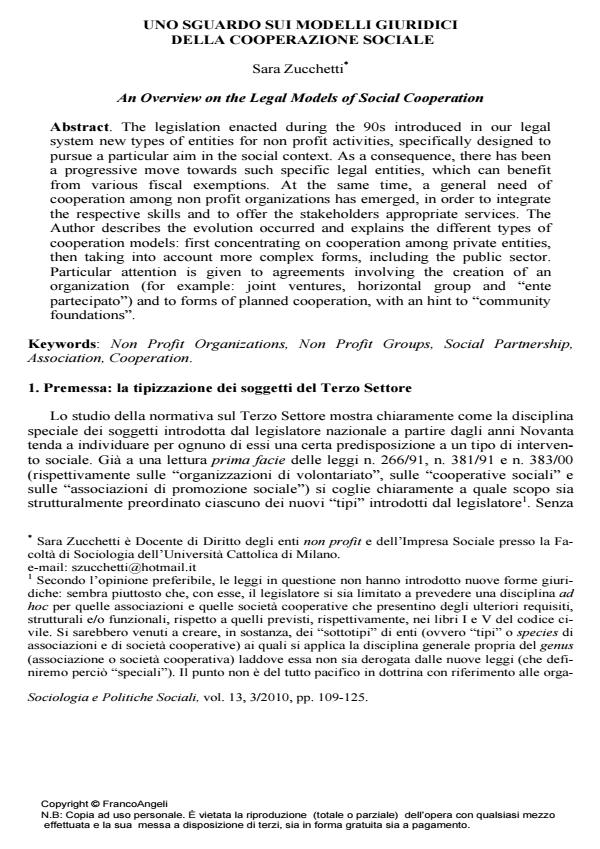An Overview on the Legal Models of Social Cooperation
Journal title SOCIOLOGIA E POLITICHE SOCIALI
Author/s Sara Zucchetti
Publishing Year 2010 Issue 2010/3
Language Italian Pages 17 P. 109-125 File size 318 KB
DOI 10.3280/SP2010-003007
DOI is like a bar code for intellectual property: to have more infomation
click here
Below, you can see the article first page
If you want to buy this article in PDF format, you can do it, following the instructions to buy download credits

FrancoAngeli is member of Publishers International Linking Association, Inc (PILA), a not-for-profit association which run the CrossRef service enabling links to and from online scholarly content.
The legislation enacted during the 90s introduced in our legal system new types of entities for non profit activities, specifically designed to pursue a particular aim in the social context. As a consequence, there has been a progressive move towards such specific legal entities, which can benefit from various fiscal exemptions. At the same time, a general need of cooperation among non profit organizations has emerged, in order to integrate the respective skills and to offer the stakeholders appropriate services. The Author describes the evolution occurred and explains the different types of cooperation models: first concentrating on cooperation among private entities, then taking into account more complex forms, including the public sector. Particular attention is given to agreements involving the creation of an organization (for example: joint ventures, horizontal group and "ente partecipato") and to forms of planned cooperation, with an hint to "community foundations".
Keywords: Non Profit Organizations, Non Profit Groups, Social Partnership, Association, Cooperation
Sara Zucchetti, Uno sguardo sui modelli giuridici della cooperazione sociale in "SOCIOLOGIA E POLITICHE SOCIALI" 3/2010, pp 109-125, DOI: 10.3280/SP2010-003007